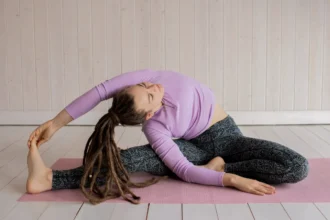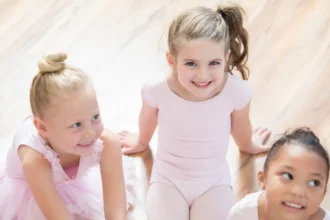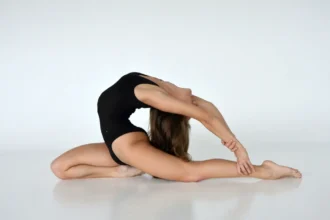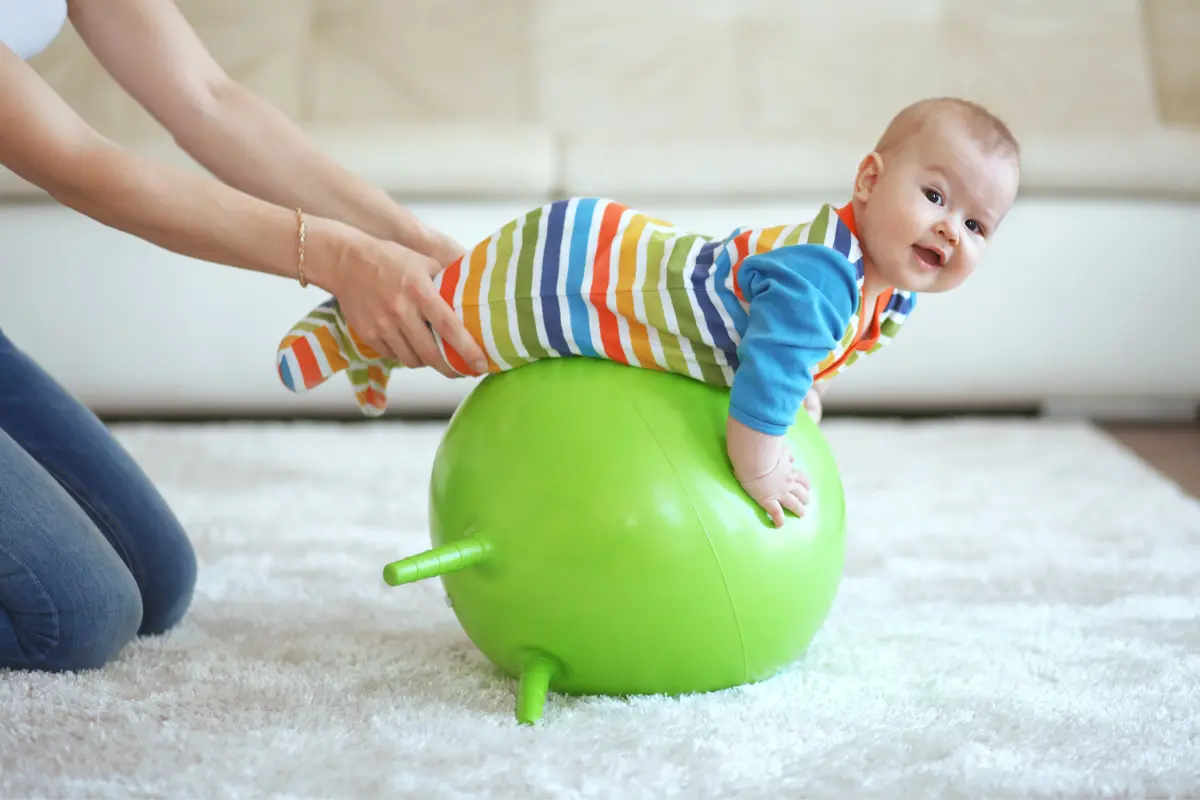When you think about gymnastics, you might imagine teenagers or adults performing flips, vaults, or graceful routines on the balance beam. However, gymnastics is a versatile sport, and there are ways for even toddlers, as young as one-year-old, to get involved.
While they won’t be flipping and twisting like elite gymnasts, they can start learning fundamental movement skills that form the basis of gymnastics.
What Can 1-Year-Olds Do in Gymnastics?
While a 1-year-old won’t be performing advanced gymnastics routines, plenty of age-appropriate activities can benefit their growth:
1. Tummy Time & Rolling
One of the earliest movements babies learn is rolling over, and tummy time is essential to help them strengthen their neck and back muscles. In a gymnastics setting, a 1-year-old can engage in tummy time on soft mats, helping them build the core strength needed for crawling, sitting, and standing.
2. Bouncing & Jumping
Gymnastics programs for toddlers often incorporate gentle bouncing activities to help improve balance and coordination. These activities may include jumping on soft, springy surfaces such as mini trampolines or soft mats. Bouncing can also help develop the lower body muscles, improving overall strength.
3. Crawling & Climbing
Simple crawling and climbing exercises on low mats or safe obstacles can help toddlers build their spatial awareness, as well as enhance their leg and arm strength. These activities encourage movement in a way that is enjoyable and non-strenuous for a 1-year-old.
4. Balance Activities
While 1-year-olds are still learning to balance, gymnastics programs designed for this age group often include balance exercises such as walking across low beams or balancing on soft, stable surfaces. These activities encourage core strength and coordination, which are vital for future physical development.
5. Stretching & Flexibility
Basic stretching exercises are another essential part of early gymnastics programs. These stretches are designed to improve flexibility and range of motion. A 1-year-old may participate in stretches that involve gentle movements of their arms and legs with guidance from a parent or instructor.
How to Get Started with Gymnastics for a 1-Year-Old
If you’re interested in introducing your 1-year-old to gymnastics, here are a few ways to start:
- Join Parent-and-Tot Classes: Many gymnastics centers offer classes specifically designed for toddlers and their parents. These classes provide a safe environment where you can guide your child through basic movements while learning the basics of gymnastics in a fun way.
- Home Play Mats: You can start practicing simple movements at home by laying out soft play mats for your toddler to roll on or use as a surface for practicing balance.
- Follow Your Child’s Lead: Every child develops at their own pace, so be sure to follow your child’s interest and comfort level. If your toddler enjoys jumping and climbing, encourage those activities. If they’re more focused on rolling or crawling, allow them to explore those movements at their own pace.
Five Simple Gymnastics Exercises for Your 1-Year-Old
Introducing gymnastics to young children can be a delightful and rewarding experience, offering a mix of fun, discovery, and developmental benefits. Here are five simple, age-appropriate gymnastics exercises that will engage your 1-year-old in a fun and educational way.
1. Stretchy Fabric Hammock Relaxation
Starting with soothing activities can ease your little one into the world of gymnastics, and a soft, stretchy fabric hammock is the perfect introduction. This gentle swing cradles your child and mimics the secure feeling of being held, helping them relax and feel safe.
The sensory experience of different textures and the calming motion of the hammock aids in sensory development and introduces them to the concept of movement in a non-overwhelming way. The gentle sway helps build a foundation for balance and body awareness, while also providing a comforting, safe space.
Safety Tip: Ensure the hammock is securely fastened low to the ground and always supervise your child while they are in it.
2. Swing and Sway on a Nest Swing
Swinging is one of the most enjoyable and engaging activities for toddlers. A nest swing provides a soft, controlled environment for your little one to experience the thrill of swinging while developing motor skills. The motion of swinging stimulates the vestibular system, which is vital for balance and spatial orientation, and helps your child gain better control over their body in space.
Beyond the physical benefits, swinging provides a fun, joyful experience that fosters a love for movement and activity.
Safety Tip: Keep the swing low to the ground and stay nearby to offer support and assistance as needed.
3. Hanging Around on Low Bars
Introducing a low horizontal bar is a great way to help your child develop upper body strength and spatial awareness. With assistance, your little one can practice hanging from the bar, which builds grip strength and arm muscles while helping them understand their body’s position in space. The activity also boosts their confidence as they master this new skill.
This foundational exercise is the first step toward more complex movements and can be a fun challenge for your toddler.
Safety Tip: Make sure the bar is securely installed at a reachable height and place a padded mat underneath for extra safety.
4. Mini Climbing Wall Adventure
Climbing is a natural activity that engages both the body and the mind, offering numerous developmental benefits.
A mini climbing wall with colorful handholds encourages your child to stretch, reach, and climb, enhancing their coordination, strength, and problem-solving skills. As they figure out how to move from one hold to the next, they improve their cognitive abilities while strengthening their muscles.
Climbing also builds confidence as they conquer small challenges and gain a sense of achievement.
Safety Tip: Always supervise climbing activities, and ensure there are soft mats or padding below to catch any falls.
5. Gymnastics Rings for Tiny Hands
Gymnastics rings provide an exciting way for young children to work on their upper body strength. Positioned at a low height, these rings allow your toddler to grasp, pull, and hold on with your help. This activity strengthens arm, core, and shoulder muscles while improving coordination. It also introduces your child to a fundamental gymnastics skill that will be useful in their future physical development.
As your little one learns to hang from the rings, they gain confidence in their physical abilities and experience the satisfaction of completing a task.
Safety Tip: Adjust the rings to a low height and provide hands-on support to ensure safety, with a soft mat underneath for added protection.
Conclusion
Although one-year-olds may begin to develop motor skills early, their muscles and bones are still growing, which means they’re better off with exploratory play rather than structured gymnastics.
Introducing play-based gymnastic activities that fit their stage of development can be really helpful. These activities encourage a joy of movement in a safe and supportive space, setting a strong base for future physical activities.





